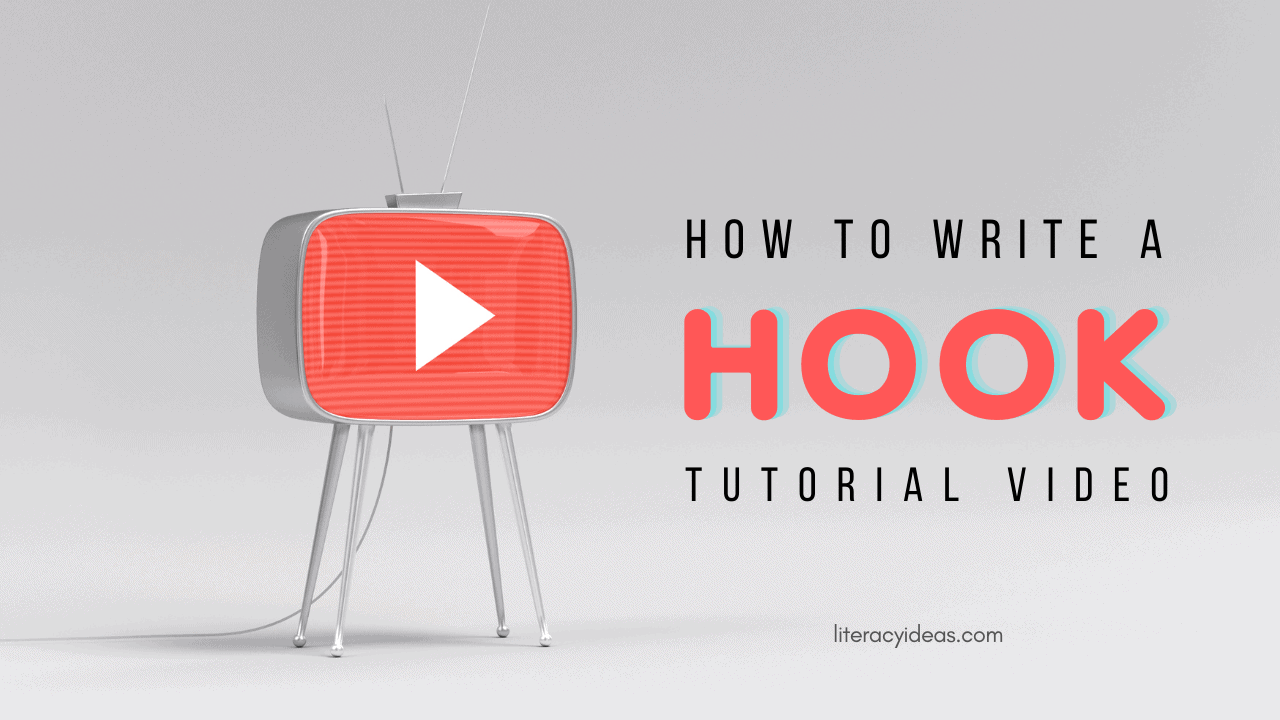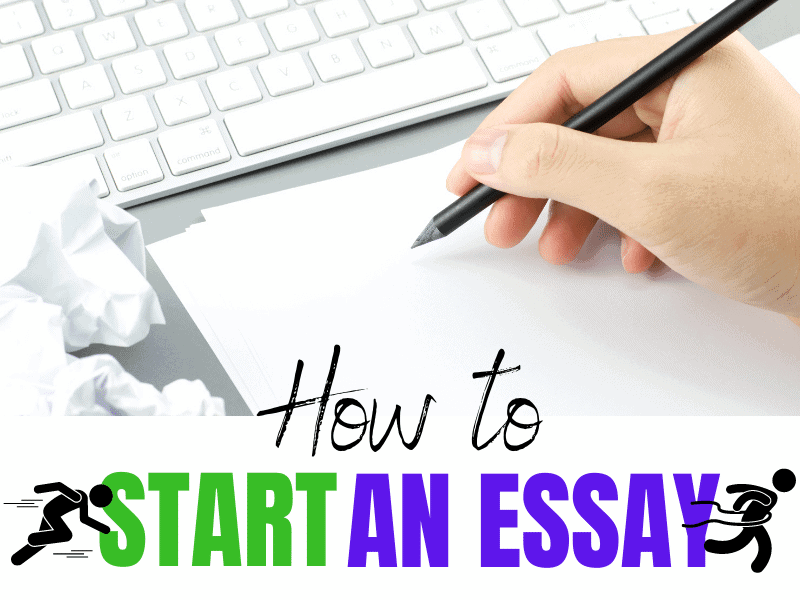
ALWAYS START AN ESSAY WITH AN ENGAGING INTRODUCTION
Getting started is often the most challenging part of writing an essay, and it’s one of the main reasons our students are prone to leaving their writing tasks to the last minute.
But what if we could give our students some tried and tested tips and strategies to show them how to start an essay?
What if we could give them various strategies they could pull out of their writer’s toolbox and kickstart their essays at any time?
In this article, we’ll look at tried and tested methods and how to start essay examples to get your students’ writing rolling with momentum to take them to their essays’ conclusion.
Once you have worked past the start of your essay, please explore our complete guide to polishing an essay before submitting it and our top 5 tips for essay writing.
WHAT IS THE PURPOSE OF AN ESSAY’S INTRODUCTION?
Essentially, the purpose of the introduction is to achieve two things:
1. To orientate the reader
2. To motivate the reader to keep reading.
An effective introduction will give the reader a clear idea of what the essay will be about. To do this, it may need to provide some necessary background information or exposition.
Once this is achieved, the writer will then make a thesis statement that informs the reader of the main ‘thrust’ of the essay’s position, the supporting arguments of which will be explored throughout the body paragraphs of the remainder of the essay.
When considering how to start an essay, ensure you have a strong thesis statement and support it through well-crafted arguments in the body paragraphs. These are complex skills in their own right and beyond the scope of this guide, but you can find more detail on these aspects of essay writing in other articles on this site that go beyond how to start an essay.
For now, our primary focus is on how to grab the reader’s attention right from the get-go.
After all, the journey of a thousand miles begins with a single step or, in this case, a single opening sentence.
A COMPLETE UNIT ON WRITING HOOKS, LEADS & INTRODUCTIONS
Teach your students to write STRONG LEADS, ENGAGING HOOKS and MAGNETIC INTRODUCTIONS for ALL TEXT TYPES with this engaging PARAGRAPH WRITING UNIT designed to take students from zero to hero over FIVE STRATEGIC LESSONS.
WHAT IS A “HOOK” IN ESSAY WRITING?
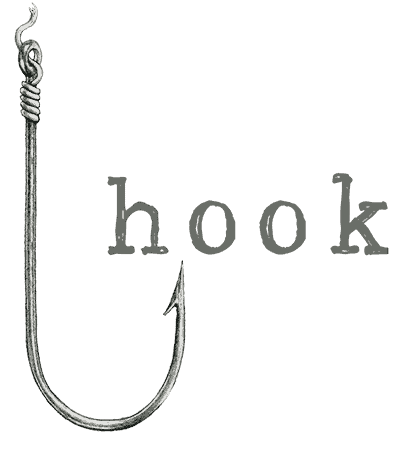
A hook is a sentence or phrase that begins your essay, grabbing the reader’s attention and making them want to keep reading. It is the first thing the reader will see, and it should be interesting and engaging enough to make them want to read more.
As you will learn from the how to start an essay examples below, a hook can be a quote, a question, a surprising fact, a personal story, or a bold statement. It should be relevant to the topic of your essay and should be able to create a sense of curiosity or intrigue in the reader. The goal of a hook is to make the reader want to read on and to draw them into the central argument or point of your essay.
Some famous examples of hooks in literature you may have encountered are as follows.
“It was the best of times, it was the worst of times”
Charles Dickens in A Tale of Two Cities
“It was a bright cold day in April, and the clocks were striking thirteen”
George Orwell in 1984
“It is a truth universally acknowledged, that a single man in possession of a good fortune, must be in want of a wife” – Jane Austen in Pride and Prejudice
Jane Austen in Pride and Prejudice
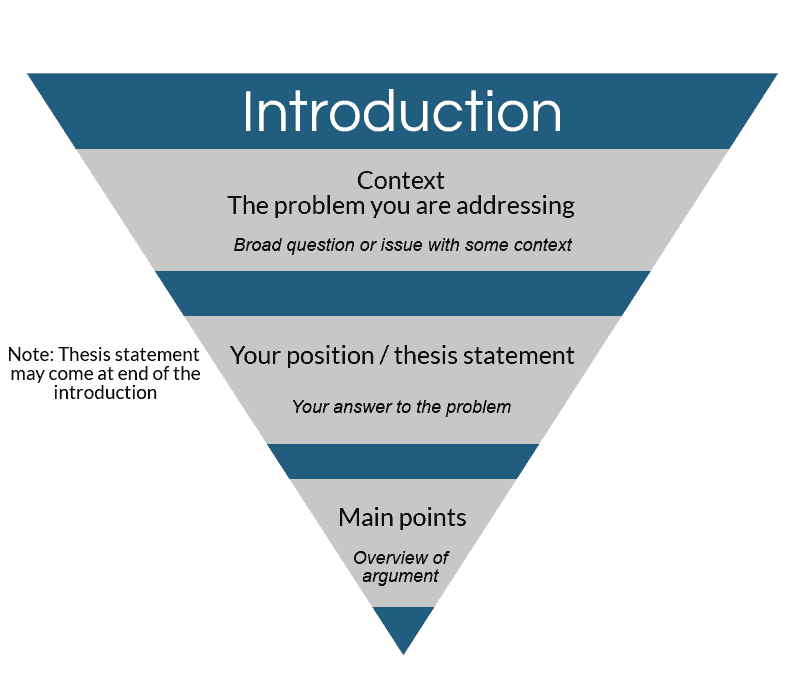
HOW TO HOOK THE READER WITH ATTENTION-GRABBING OPENING SENTENCES
We all know that every essay has a beginning, a middle, and an end. But, if our students don’t learn to grab the reader’s attention from the opening sentence, they’ll struggle to keep their readers engaged long enough to make it through the middle to the final full stop. Take a look at these five attention-grabbing sentence examples.
- “The secret to success is hidden in a single, elusive word: persistence.”
- “Imagine a world without electricity, where the only source of light is the flame of a candle.”
- “It was the best of times, it was the worst of times, but most importantly, it was the time that changed everything.”
- “They said it couldn’t be done, but she proved them wrong with her grit and determination.”
- “He stood at the edge of the cliff, staring down at the tumultuous ocean below, knowing that one misstep could mean certain death.”
Regardless of what happens next, those sentences would make any reader stop whatever else they might focus on and read with more intent than before. They have provided the audience with a “hook” intended to lure us further into their work.
To become effective essay writers, your students need to build the skill of writing attention-grabbing opening sentences. The best way of achieving this is to use ‘hooks’.
There are several kinds of hooks that students can choose from. In this article, we’ll take a look at some of the most effective of these:
1. The Attention-Grabbing Anecdote
2. The Bold Pronouncement!
3. The Engaging Fact
4. Using an Interesting Quote
5. Posing a Rhetorical Question
6. Presenting a Contrast
How appropriate each of these hooks is will depend on the essay’s nature. Students must consider the topic, purpose, tone, and audience of the essay they’re writing before deciding how best to open it.
Let’s look at each of these essay hooks, along with a practice activity students can undertake to put their knowledge of each hook into action.
1: HOW TO START AN ESSAY WITH “THE ATTENTION-GRABBING ANECDOTE”
Anecdotes are an effective way for the student to engage the reader’s attention right from the start.
When the anecdote is based on the writer’s personal life, they are a great way to create intimacy between the writer and the reader from the outset.
Anecdotes are an especially useful starting point when the essay explores more abstract themes as they climb down the ladder of abstraction and fit the broader theme of the essay to the shape of the writer’s life.
Anecdotes work because they are personal, and because they’re personal, they infuse the underlying theme of the essay with emotion.
This expression of emotion helps the writer form a bond with the reader. And it is this bond that helps encourage the reader to continue reading.
Readers find this an engaging approach, mainly when the topic is complex and challenging.
Anecdotes provide an ‘in’ to the writing’s broader theme and encourage the reader to read on.
Examples of Attention-grabbing anecdotes
- “It was my first day of high school, and I was a bundle of nerves. I had always been a shy kid, and the thought of walking into a new school, surrounded by strangers was overwhelming. But as I walked through the front doors, something unexpected happened. A senior, who I had never met before, came up to me and said ‘Welcome to high school; it’s going to be an amazing four years.’ That one small act of kindness from a complete stranger made all the difference, and from that day on, I knew that I would be okay.”
- “I was in my math class and having a tough day. I had a test coming up, and I was struggling to understand the material. My teacher, who I had always thought was strict and unapproachable, noticed that I was struggling and asked if I needed help. I was surprised, but I took her up on her offer, and she spent extra time with me after class, helping me to understand the material. That experience taught me that sometimes, the people we think we know the least about are the ones who can help us the most.”
- “It was the last day of 8th grade, and we were all sitting in the auditorium, waiting for the ceremony to begin. Suddenly, the principal got on stage and announced that there was a surprise guest speaker. I was confused and curious, but when the guest walked out on stage, I couldn’t believe my eyes. It was my favorite rapper who had come to speak to us about the importance of education. That moment was a turning point for me, it showed me that if you work hard and believe in yourself, anything is possible.”
Attention-Grabbing Anecdote Teaching Strategies
One way to help students access their personal stories is through sentence starters, writing prompts, or well-known stories and their themes.
First, instruct students to choose a theme to write about. For example, if we look at the theme of The Boy Who Cried Wolf, something like: we shouldn’t tell lies, or people may not believe us when we tell the truth.
Fairytales and fables are great places for students to find simple themes or moral lessons to explore for this activity.
Once they’ve chosen a theme, encourage the students to recall a time when this theme was at play in their own lives. In the case above, a time when they paid the cost, whether seriously or humorously, for not telling the truth.
This memory will form the basis for a personal anecdote that will form a ‘hook’. Students can practice replicating this process for various essay topics.
It’s essential when writing anecdotes that students attempt to capture their personal voice.
One way to help them achieve this is to instruct them to write as if they were orally telling their story to a friend.
This ‘vocal’ style of writing helps to create intimacy between writer and reader, which is the hallmark of this type of opening.
2: HOW TO START AN ESSAY WITH “THE BOLD PRONOUNCEMENT”
As the old cliché “Go big or go home!” would have it, making a bold pronouncement at the start of an essay is one surefire way to catch the reader’s attention.
Bold statements exude confidence and assure the reader that this writer has something to say that’s worth hearing. A bold statement placed right at the beginning suggests the writer isn’t going to hedge their bets or perch passively on a fence throughout their essay.
The bold pronouncement technique isn’t only useful for writing a compelling opening sentence, the formula can be used to generate a dramatic title for the essay.
For example, the recent New York Times bestseller ‘Everybody Lies’ by Seth Stephens-Davidowitz is an excellent example of the bold pronouncement in action.
Examples of Bold Pronouncements
- “I will not be just a statistic, I will be the exception. I will not let my age or my background define my future, I will define it myself.”
- “I will not be afraid to speak up and make my voice heard. I will not let anyone silence me or make me feel small. I will stand up for what I believe in and I will make a difference.”
- “I will not be satisfied with just getting by. I will strive for greatness and I will not be content with mediocrity. I will push myself to be the best version of me, and I will not settle for anything less.”
Strategies for Teaching how to write a Bold Pronouncement
Give the students a list of familiar tales; again, Aesop’s Fables make for a good resource.
In groups, have them identify some tales’ underlying themes or morals. For this activity, these can take the place of an essay’s thesis statement.
Then, ask the students to discuss in their groups and collaborate to write a bold pronouncement based on the story. Their pronouncement should be short, pithy, and, most importantly, as bold as bold can be.
3: HOW TO START AN ESSAY WITH “THE ENGAGING FACT”
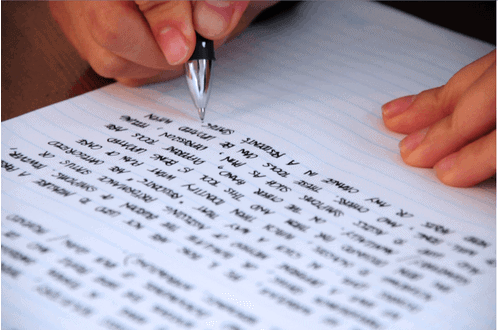
In our cynical age of ‘fake news’, opening an essay with a fact or statistic is a great way for students to give authority to their writing from the very beginning.
Students should choose the statistic or fact carefully, it should be related to their general thesis, and it needs to be noteworthy enough to spark the reader’s curiosity.
This is best accomplished by selecting an unusual or surprising fact or statistic to begin the essay with.
Examples of the Engaging Fact
- “Did you know that the average teenager spends around 9 hours a day consuming media? That’s more than the time they spend sleeping or in school!”
- “The brain continues to develop until the age of 25, which means that as a teenager, my brain is still going through major changes and growth. This means I have a lot of potential to learn and grow.”
- “The average attention span of a teenager is shorter than that of an adult, meaning that it’s harder for me to focus on one task for an extended time. This is why it is important for me to balance different activities and take regular breaks to keep my mind fresh.”
Strategies for teaching how to write engaging facts
This technique can work well as an extension of the bold pronouncement activity above.
When students have identified each of the fables’ underlying themes, have them do some internet research to identify related facts and statistics.
Students highlight the most interesting of these and consider how they would use them as a hook in writing an essay on the topic.
4: HOW TO START AN ESSAY USING “AN INTERESTING QUOTATION”
This strategy is as straightforward as it sounds. The student begins their essay by quoting an authority or a well-known figure on the essay’s topic or related topic.
This quote provides a springboard into the essay’s subject while ensuring the reader is engaged.
The quotation selected doesn’t have to align with the student’s thesis statement.
In fact, opening with a quotation the student disagrees with can be a great way to generate a debate that grasps the reader’s attention from the outset.
Examples of starting an essay with an interesting quotation.
- “As Albert Einstein once said, ‘Everybody is a genius. But if you judge a fish by its ability to climb a tree, it will live its whole life believing that it is stupid.’ As a 16-year-old student, I know how it feels to be judged by my ability to climb the “academic tree” and how it feels to be labeled as “stupid”. But just like the fish in Einstein’s quote, I know that my true potential lies in my unique abilities and talents, not in how well I can climb a tree.”
- “Mark Twain once said, ‘Whenever you find yourself on the side of the majority, it is time to pause and reflect.’ This quote resonates with me because as a teenager, I often feel pressure to conform to the expectations and opinions of my peers. But this quote reminds me to take a step back and think for myself, rather than blindly following the crowd.”
- “As J.K. Rowling famously said, ‘It does not do to dwell on dreams and forget to live.’ As a 16-year-old student, I often find myself getting lost in my dreams for the future and forgetting to live in the present. But this quote serves as a reminder to me to strive for my goals while also cherishing and living in the here and now.”
Teaching Strategies for starting an essay with an interesting quotation.
To gain practice in this strategy, organize the students into groups and have them generate a list of possible thesis statements for their essays.
Once they have a list of statements, they now need to generate a list of possible quotations related to their hypothetical essay’s central argument.
Several websites are dedicated to curating pertinent quotations from figures of note on an apparently inexhaustible array of topics. These sites are invaluable resources for tracking down interesting quotations for any essay.
5: HOW TO START AN ESSAY BY “POSING A RHETORICAL QUESTION”
What better way to get a reader thinking than to open with a question?
See what I did there?
Beginning an essay with a question not only indicates to the reader the direction the essay is headed in but also challenges them to respond personally to the topic.
Rhetorical questions are asked to make a point and to get the reader thinking rather than to elicit an answer.
One effective way to use a rhetorical question in an introduction is to craft a rhetorical question from the thesis statement and use it as the opening sentence.
The student can then end the opening paragraph with the thesis statement itself.
In this way, the student has presented their thesis statement as the answer to the rhetorical question asked at the outset.
Rhetorical questions also make for valuable transitions between paragraphs.
Examples of starting an essay with a rhetorical question
- “What if instead of judging someone based on their appearance, we judged them based on their character? As a 16-year-old, I see the damage caused by judging someone based on their physical appearance, and it’s time to move away from that and focus on character.”
- “How can we expect to solve the world’s problems if we don’t start with ourselves? As a 16-year-old student, I am starting to see the issues in the world, and I believe that before we can make any progress, we need to start with ourselves.”
- “What would happen if we stopped labelling people by race, religion, or sexual orientation? As a teenager growing up in a diverse world, I see the harm caused by labelling and stereotyping people; it’s time for us to stop and see people for who they truly are.”
Teaching Students how to start an essay with a rhetorical question
To get some experience posing rhetorical questions, organize your students into small groups, and give each group a list of essay thesis statements suited to their age and abilities.
Task the students to rephrase each of the statements as questions.
For example, if we start with the thesis statement “Health is more important than wealth”, we might reverse engineer a rhetorical question such as “What use is a million dollars to a dying man?”
Mastering how to start an essay with a question is a technique that will become more common as you progress in confidence as a writer.
6: HOW TO START AN ESSAY BY “PRESENTING A CONTRAST”
In this opening, the writer presents a contrast between the image of the subject and its reality. Often, this strategy is an effective opener when widespread misconceptions on the subject are widespread.
For example, if the thesis statement is something like “Wealth doesn’t bring happiness”, the writer might open with a scene describing a lonely, unhappy person surrounded by wealth and opulence.
This scene contrasts a luxurious setting with an impoverished emotional state, insinuating the thrust of the essay’s central thesis.
Examples of Starting an essay by presenting a contrast
- “On one hand, technology has made it easier to stay connected with friends and family than ever before. On the other hand, it has also created a sense of disconnection and loneliness in many people, including myself as a 16-year-old. “
- “While social media has allowed us to express ourselves freely, it has also led to a culture of cyberbullying and online harassment. As a teenager, I have seen social media’s positive and negative effects.”
- “On one hand, the internet has given us access to a wealth of information. On the other hand, it has also made it harder to separate fact from fiction and to distinguish credible sources from fake news. This is becoming increasingly important for me as a 16-year-old student in today’s society.”
Teaching Strategies for presenting a contrast when starting an essay.
For this activity, you can use the same list of thesis statements as in the activity above. In their groups, challenge students to set up a contrasting scene to evoke the essay’s central contention, as in the example above.
The scene of contrast can be a factual one in a documentary or anecdotal style, or a fictionalized account.
Whether the students are using a factual or fictional scene for their contrast, dramatizing it can make it much more persuasive and impactful.
THE END OF THE BEGINNING
These aren’t the only options available for opening essays, but they represent some of the best options available to students struggling to get started with the concept of how to create an essay.
With practice, students will soon be able to select the best strategies for their needs in various contexts.
To reinforce their understanding of different strategies for starting an introduction for an essay, encourage them to pay attention to the different choices writers make each time they begin reading a new nonfiction text.
Just like getting good at essay writing itself, getting good at writing openings requires trial and error and lots and lots of practice.





